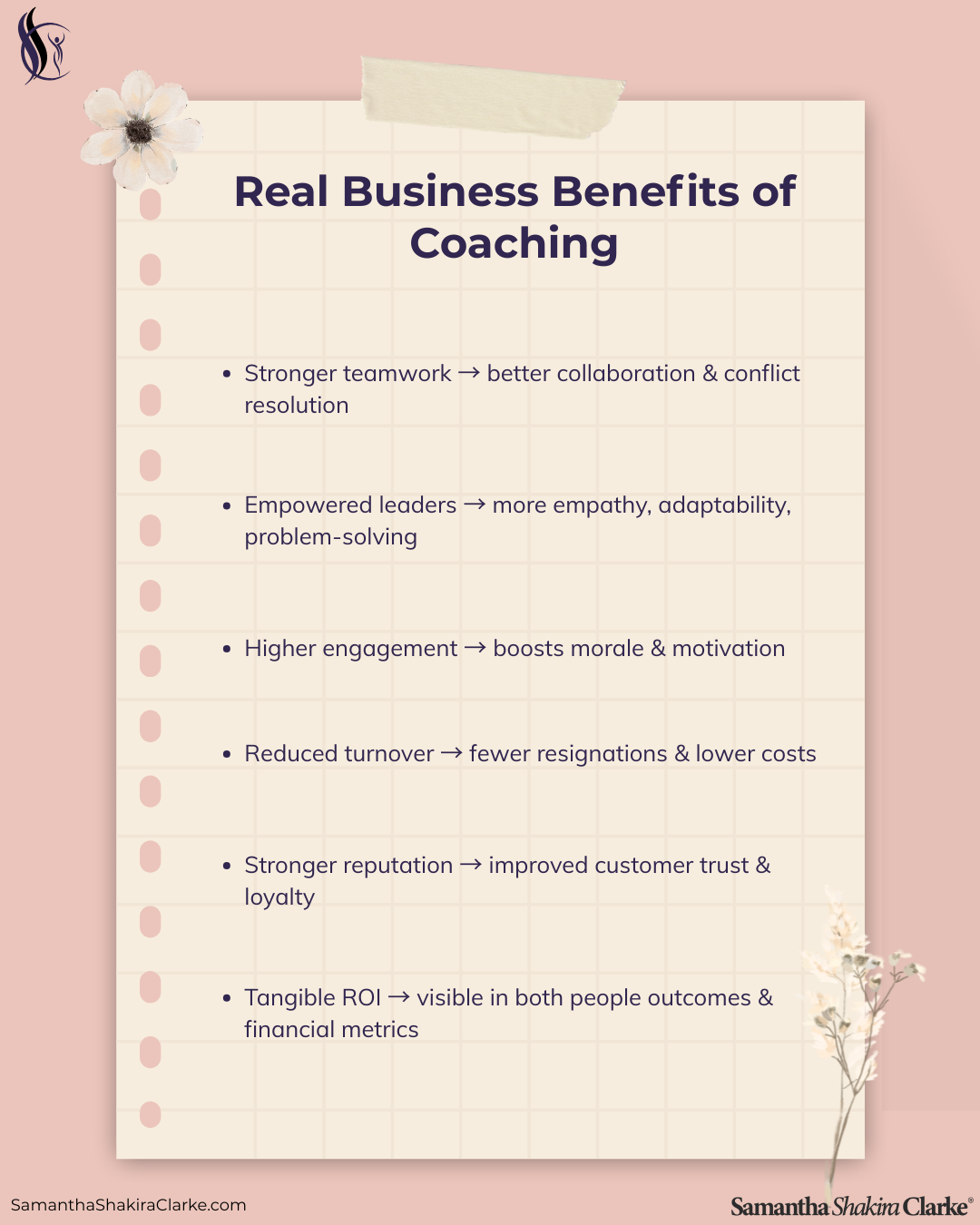 Book Now!
Book Now!When organizations think about wellness coaching or executive coaching, the first question often raised is: Does it really pay off? The truth is, measuring the ROI on wellness coaching and executive coaching goes beyond financial numbers. It’s about long-term performance, healthier cultures, and leaders who are more resilient in high-pressure environments. Companies that understand this broader view see coaching not as an expense, but as an investment in sustainable growth.
At SSC Corporate and Personal Wellness, we’ve seen organizations transform when they invest in coaching. From executives gaining emotional agility to employees feeling supported and engaged, coaching unlocks potential that impacts every corner of the business. But to see the ROI on wellness coaching, leaders must know what to look for and how to measure it.
The ROI on wellness coaching and executive coaching is not limited to balance sheets. While cost savings and productivity gains are essential, ROI in coaching should also be understood in terms of employee retention, leadership effectiveness, and overall workplace satisfaction. These are harder to quantify but deeply connected to organizational success.
Executives who invest in coaching often discover benefits such as improved decision-making, stronger communication skills, and higher emotional intelligence. These intangible gains lead to tangible results over time. By broadening the definition of ROI, organizations avoid the trap of looking only at short-term returns.
Research consistently highlights the benefits of executive coaching ROI. According to the International Coaching Federation, companies that invest in coaching see an average ROI of seven times their initial investment. Furthermore, studies by Deloitte and Harvard Business Review show that coaching directly improves engagement, innovation, and retention, all of which are essential for business continuity.
The ROI on wellness coaching also manifests in improved health outcomes. Employees with access to coaching report lower stress, better work-life balance, and higher satisfaction rates. This not only reduces burnout but also lowers absenteeism and healthcare costs. In essence, the evidence confirms that coaching is not a luxury; it’s a strategy for organizational resilience (Harvard Business Review, Deloitte).
The ROI on wellness coaching becomes most powerful when you look at the day-to-day impact on leaders and their teams. Coaching doesn’t just create better executives; it cultivates healthier workplaces where collaboration and innovation thrive. These benefits ripple outward, shaping everything from employee engagement to customer trust.

A North American technology firm recently invested in wellness and executive coaching to address high turnover among managers. After six months, employee satisfaction surveys showed a 25% increase in trust and communication within teams. Absenteeism dropped by 15%, and productivity rose by 18%. The organization calculated a clear ROI on wellness coaching, noting that savings in recruitment and training alone outweighed the program’s costs.
This snapshot demonstrates how coaching ROI extends beyond individual performance to broader organizational health. While every company’s numbers differ, the consistent outcome is that coaching investments generate measurable and meaningful returns.
Measuring the ROI on wellness coaching requires combining quantitative and qualitative data. Financial indicators, such as reduced turnover costs, lower absenteeism, and higher productivity, provide concrete evidence. However, qualitative measures such as leadership feedback, employee surveys, and cultural shifts are equally important.
One practical approach is to use a before-and-after model. Track key metrics, such as engagement, performance, and health indicators, before implementing coaching, and then reassess them six months later. Organizations that consistently monitor these benchmarks find it easier to demonstrate the true executive coaching ROI.

Sources: (ICF, OpenUp, Emerald Insight)
The ROI on wellness coaching and executive coaching is real, but it requires a broader perspective to appreciate it fully. Beyond dollars, coaching transforms leaders, improves workplace culture, and strengthens organizational resilience. When businesses measure ROI using both complex numbers and human-centered data, the impact becomes undeniable.
If your organization is ready to experience the benefits of wellness coaching and executive coaching, start by setting clear goals and metrics. And if you’re looking for guidance, SSC Corporate and Personal Wellness can help you build a program that delivers measurable returns. Reach out today at team@samanthashakiraclarke.com or book a free discovery call to explore how coaching can support your organization’s growth.